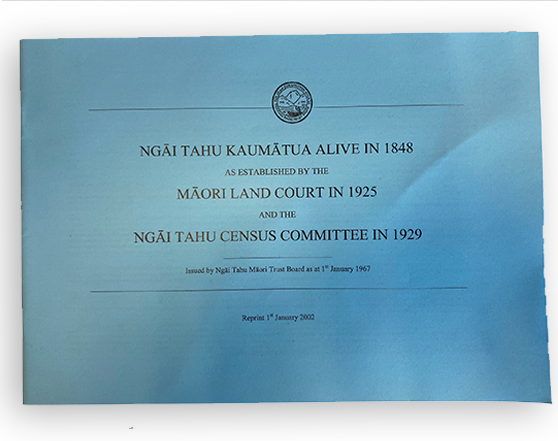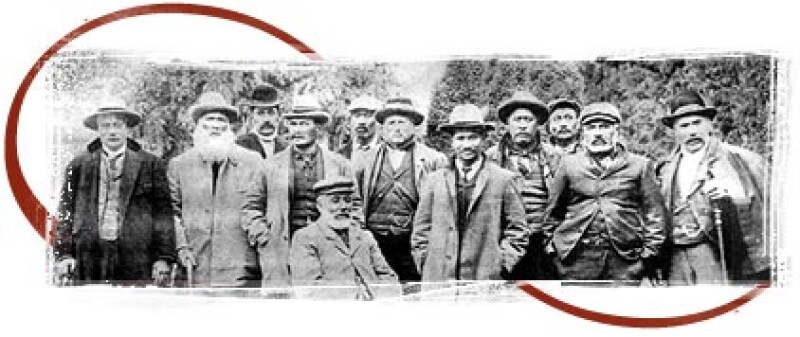Registration Whakapapa

The enrolment process as it exists today began evolving in the mid 1960s. Enrolment forms can be obtained either by mail, in person from our office, you can download the Whakapapa Registration Form or you can complete your whakapapa registration online.
The main information required, beside personal details, are your whakapapa and the name(s) of your original 1848 Kaumātua and their corresponding census number(s). These details can be found in the Ngāi Tahu 1848 Census known as the ‘Blue Book’ (see below).
Please note: To register with Whakapapa you will need a valid birth certificate. Visit the Department of Internal Affairs for information about how to get a birth certificate.
If your parents are registered with Ngāi Tahu, register using our online form.
Complete Your Registration Form Online
Alternatively, if your parents are not registered with Ngāi Tahu, please use the form below.
Blue Book (1848 Census)
The ability for Ngāi Tahu to accurately trace their whakapapa owes much to systems dating back to the late 1800s when whakapapa and traditions were formally recorded to progress tribal land claims. The Crown carried out census in 1848 and 1853 as a prelude to the land purchases, it was in 1925 and 1929 that Ngāi Tahu Census Committees brought together this work and created the Blue Book containing all the names of those Ngāi Tahu kaumātua alive in 1848 and 1853.
Today more than 80,000 registered Ngāi Tahu trace their whakapapa back to at least one of these kaumātua.

Whakapapa Ngāi Tahu - A Guide to Enrolment
Hover your mouse over the flip book and click on “Full Screen”. Or view a pdf version below.
Management of the Tribal Registration Process
The management of the tribal registration process is based on systems dating back to the 1870s and 1890s when tohunga recorded Ngāi Tahu whakapapa and traditions to progress the various tribal claims. By the 1920s however, little progress had been made. Some of those claims were 80 years old and had been subjected to numerous political and legal processes of the Crown.
In 1925 and again in 1929 the Native Land Court sat at Tuahiwi and other locations to identify the potential beneficiaries of claims relating to inadequate reserves made in 1848 and the early 1850s. Wereta Tainui Pitama was the inaugural chairman of the Ngāi Tahu Census Committee elected to guide the court in the identification process. This work necessitated Pitama and others compiling a body of whakapapa establishing the descendants of those who had lived within the original purchase area.
Both the 1925 and 1929 Census Committees drew on whakapapa recorded in the 1870s and 1880s.
The work of the Ngāi Tahu and Ngāti Māmoe Census Committee set the foundation for the modern day Ngāi Tahu Whakapapa record and registration process. The records generated by that Committee were organised and stored in a series of numerical files. The files were ordered around individual and or groups of related 1848 kaumātua.
Initially the Māori Land Court retained these files, but in 1966 agreement was reached between the Ngāi Tahu Māori Trust Board and the Minister of Māori Affairs that the original whakapapa record and files would be returned to its care.
